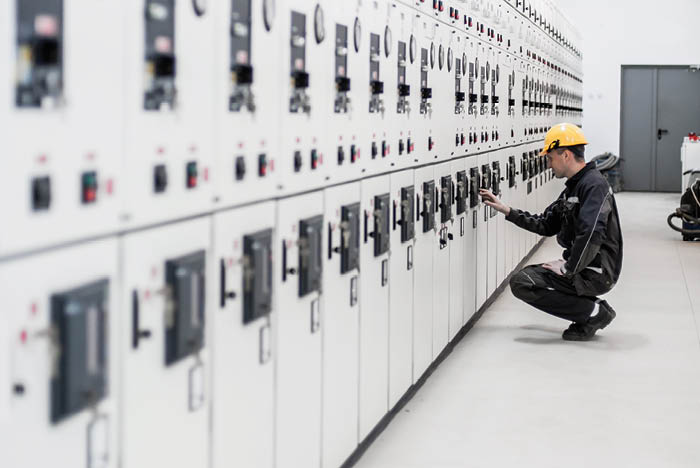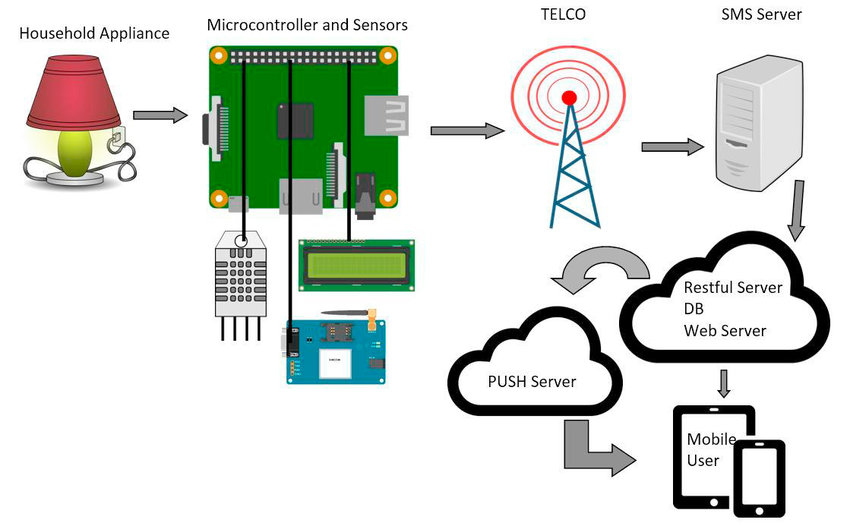
the user power distribution room automation monitoring system
With the expansion of the power supply scale, the automated monitoring of user power distribution rooms has become more and more important. For the automation monitoring system of the user power distribution room, the design of the monitoring system is particularly important. Strengthening the monitoring of user power distribution rooms is of great significance to the normal operation of the power grid. Therefore, it is necessary to strengthen the analysis of the design of the automation monitoring system of the user power distribution room, so as to grasp the information of the user power distribution room in real time.

1. Analysis of the overall design of the automation monitoring system for the user power distribution room
1.1 System composition
During the operation of the user power distribution room, the distribution transformer is an important part and a part that is prone to failure. Therefore, the monitoring of the user power distribution room is mainly to detect the status of the power distribution transformer. Through the management of the main power supply and the backup power supply, a stable power supply can be ensured for the system. Through the application of infrared communication equipment, communication with smart devices can be realized. Therefore, the three-phase current of each low-voltage outlet must also be included in the monitoring range.
1.2 Realization of the main functions of the terminal
The terminal device can complete the collection and storage of electric energy, and realize the measurement of electric energy, and also complete the communication with the smart meter; according to the attributes of the event, it can be classified and recorded, including the time, location and type of the event; the important event The record will be fed back to the master station in time, and general events will only be collected for the master station to query.
2. The terminal hardware design of the automation monitoring system of the user power distribution room
The distribution transformer monitoring terminal hardware mainly includes operation monitoring system, human-computer interaction system, power supply system, communication system, switch input/output, DC analog signal acquisition, AC analog signal acquisition and core processor. The high-performance 32-bit core processor is used as the core processor of the distribution transformer monitoring terminal. The electric energy metering chip adopts a multi-function anti-theft fundamental harmonic three-phase chip; under the action of the AC analog quantity acquisition system, it can be timely and accurate Grasp data such as frequency, electricity, power factor, reactive power, active power, current and voltage; under the action of the digital input/output system and the DC analog acquisition system, the monitoring terminal can complete the monitoring of the transformer oil pressure and oil temperature In the power supply system, the main power supply system is to collect backup power supply and stable performance module stabilized power supply, so that the main power supply can be powered off so that the system can perform normal data processing; there are multiple communication interfaces in the communication system, and these interfaces can Ensure the normal communication between the various systems; by configuring the large-capacity Flash in the distribution transformer monitoring terminal, the ISP and LAP functions can be realized; in the human-computer interaction system, the screen monitoring is mainly realized through the application of the liquid crystal display.

3. Software design of the automation monitoring system for the user power distribution room
The software design in the user power distribution room monitoring system is also very important. It can complete the analysis of the transformer operating data and line loss on the basis of the patrol inspection and the receiving terminal report. Second, the system management function, this functional module allows users to move, modify, delete and add object units such as power distribution stations and lines according to their actual requirements; third, the data collection function, which contains documents Multiple functions such as uploading, real-time monitoring, GPRS collection and timing collection; fourth, data analysis function, which can complete single-unit analysis, multiple-unit analysis and comprehensive analysis of data according to the actual situation; fifth, system setting function, It is mainly to set the software interface style, device type, GPRS terminal type and communication protocol and other parameters; sixth, the log recording function, which mainly records the operating status of the system, user information and regularly cleans up the historical logs in the system.
With the expansion of the power supply scale, the automated monitoring of user power distribution rooms has become more and more important. For the automation monitoring system of the user power distribution room, the design of the monitoring system is particularly important. Strengthening the monitoring of user power distribution rooms is of great significance to the normal operation of the power grid. Therefore, it is necessary to strengthen the analysis of the design of the automation monitoring system of the user power distribution room, so as to grasp the information of the user power distribution room in real time.

1. Analysis of the overall design of the automation monitoring system for the user power distribution room
1.1 System composition
During the operation of the user power distribution room, the distribution transformer is an important part and a part that is prone to failure. Therefore, the monitoring of the user power distribution room is mainly to detect the status of the power distribution transformer. Through the management of the main power supply and the backup power supply, a stable power supply can be ensured for the system. Through the application of infrared communication equipment, communication with smart devices can be realized. Therefore, the three-phase current of each low-voltage outlet must also be included in the monitoring range.
1.2 Realization of the main functions of the terminal
The terminal device can complete the collection and storage of electric energy, and realize the measurement of electric energy, and also complete the communication with the smart meter; according to the attributes of the event, it can be classified and recorded, including the time, location and type of the event; the important event The record will be fed back to the master station in time, and general events will only be collected for the master station to query.
2. The terminal hardware design of the automation monitoring system of the user power distribution room
The distribution transformer monitoring terminal hardware mainly includes operation monitoring system, human-computer interaction system, power supply system, communication system, switch input/output, DC analog signal acquisition, AC analog signal acquisition and core processor. The high-performance 32-bit core processor is used as the core processor of the distribution transformer monitoring terminal. The electric energy metering chip adopts a multi-function anti-theft fundamental harmonic three-phase chip; under the action of the AC analog quantity acquisition system, it can be timely and accurate Grasp data such as frequency, electricity, power factor, reactive power, active power, current and voltage; under the action of the digital input/output system and the DC analog acquisition system, the monitoring terminal can complete the monitoring of the transformer oil pressure and oil temperature In the power supply system, the main power supply system is to collect backup power supply and stable performance module stabilized power supply, so that the main power supply can be powered off so that the system can perform normal data processing; there are multiple communication interfaces in the communication system, and these interfaces can Ensure the normal communication between the various systems; by configuring the large-capacity Flash in the distribution transformer monitoring terminal, the ISP and LAP functions can be realized; in the human-computer interaction system, the screen monitoring is mainly realized through the application of the liquid crystal display.

3. Software design of the automation monitoring system for the user power distribution room
The software design in the user power distribution room monitoring system is also very important. It can complete the analysis of the transformer operating data and line loss on the basis of the patrol inspection and the receiving terminal report. Second, the system management function, this functional module allows users to move, modify, delete and add object units such as power distribution stations and lines according to their actual requirements; third, the data collection function, which contains documents Multiple functions such as uploading, real-time monitoring, GPRS collection and timing collection; fourth, data analysis function, which can complete single-unit analysis, multiple-unit analysis and comprehensive analysis of data according to the actual situation; fifth, system setting function, It is mainly to set the software interface style, device type, GPRS terminal type and communication protocol and other parameters; sixth, the log recording function, which mainly records the operating status of the system, user information and regularly cleans up the historical logs in the system.




